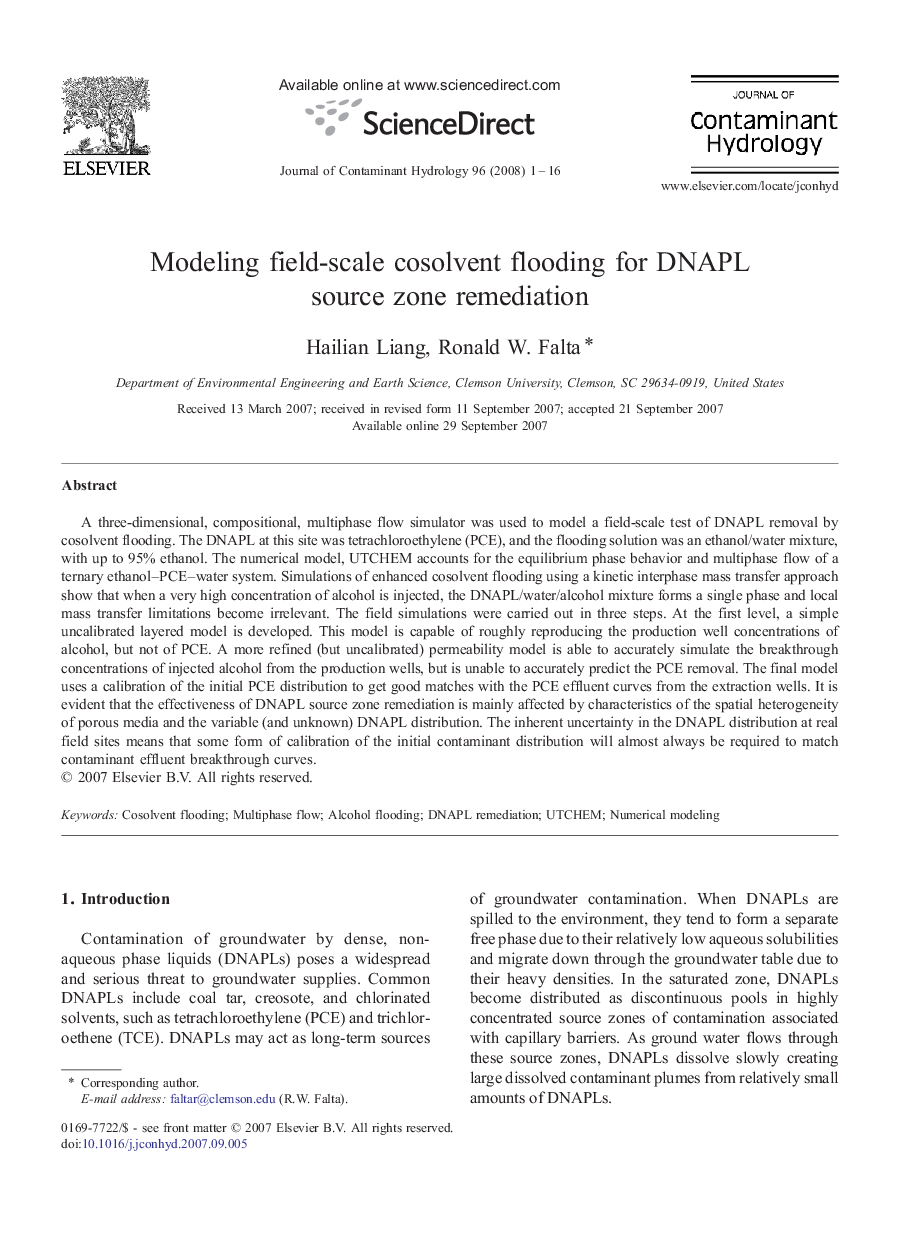| Article ID | Journal | Published Year | Pages | File Type |
|---|---|---|---|---|
| 4547534 | Journal of Contaminant Hydrology | 2008 | 16 Pages |
A three-dimensional, compositional, multiphase flow simulator was used to model a field-scale test of DNAPL removal by cosolvent flooding. The DNAPL at this site was tetrachloroethylene (PCE), and the flooding solution was an ethanol/water mixture, with up to 95% ethanol. The numerical model, UTCHEM accounts for the equilibrium phase behavior and multiphase flow of a ternary ethanol–PCE–water system. Simulations of enhanced cosolvent flooding using a kinetic interphase mass transfer approach show that when a very high concentration of alcohol is injected, the DNAPL/water/alcohol mixture forms a single phase and local mass transfer limitations become irrelevant. The field simulations were carried out in three steps. At the first level, a simple uncalibrated layered model is developed. This model is capable of roughly reproducing the production well concentrations of alcohol, but not of PCE. A more refined (but uncalibrated) permeability model is able to accurately simulate the breakthrough concentrations of injected alcohol from the production wells, but is unable to accurately predict the PCE removal. The final model uses a calibration of the initial PCE distribution to get good matches with the PCE effluent curves from the extraction wells. It is evident that the effectiveness of DNAPL source zone remediation is mainly affected by characteristics of the spatial heterogeneity of porous media and the variable (and unknown) DNAPL distribution. The inherent uncertainty in the DNAPL distribution at real field sites means that some form of calibration of the initial contaminant distribution will almost always be required to match contaminant effluent breakthrough curves.
